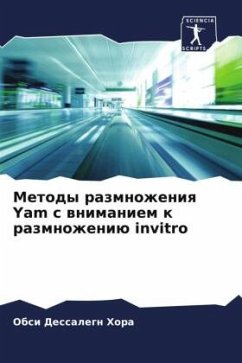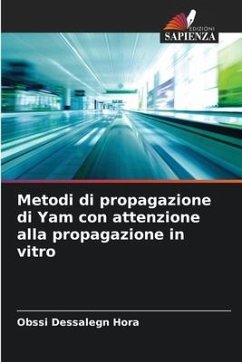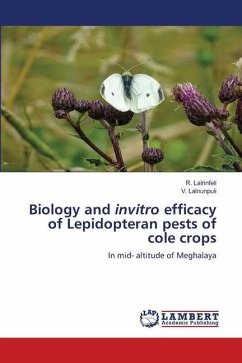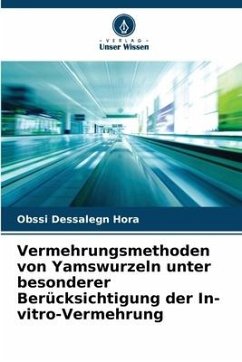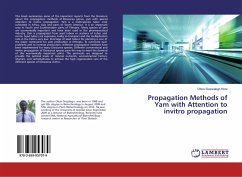
Propagation Methods of Yam with Attention to invitro propagation
Versandkostenfrei!
Versandfertig in 6-10 Tagen
24,99 €
inkl. MwSt.

PAYBACK Punkte
12 °P sammeln!
This book summarizes some of the important reports from the literature about the propagation methods of Dioscorea genus, yam with special attention to invitro propagation. Yam is a multi-species tuber crop cultivated in Africa, Asia and parts of South America. It is an important crop in South and Southwestern parts of Ethiopia. Many species of yam are economically important and have been used in the pharmaceutical industry. Yam is propagated from seed tubers or sections of tuber and corms. Seed tubers are expensive, bulky to transport and the multiplication rate in the field is very low. Short...
This book summarizes some of the important reports from the literature about the propagation methods of Dioscorea genus, yam with special attention to invitro propagation. Yam is a multi-species tuber crop cultivated in Africa, Asia and parts of South America. It is an important crop in South and Southwestern parts of Ethiopia. Many species of yam are economically important and have been used in the pharmaceutical industry. Yam is propagated from seed tubers or sections of tuber and corms. Seed tubers are expensive, bulky to transport and the multiplication rate in the field is very low. Shortage of seed tubers for planting is one of the major constraints for yam production in Ethiopia. To overcome such problems and to increase production, different propagation methods have been implemented for many Dioscorea species. Different conventional and invitro propagation of Dioscorea species pave the way to meet the demand of this economically important plant. The protocols are designedto provide the optimal levels of mineral nutrients, environmental factors, vitamins, and carbohydrates to achieve the high regeneration rate of the different species of Dioscorea invitro.




